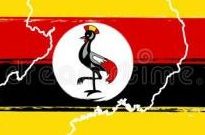At independence, Nebbi District located in the North-Western part of Uganda, was part of the then West Nile District until 1974 when it was divided into North Nile, Central Nile and South Nile Districts. South Nile became Nebbi in 1980. Nebbi lies between the latitudes 20 20’ N and 20 40’ N and longitude 310 0’0 E and 310 20’ E. It is bordered to the North by Arua district, Zombo to the west, Amuru and Nwoya to the East, Bullisia to the South-East and the Democratic Republic of Congo to the South-West.
In 2010, Okoro County was split off Nebbi to form Zombo district leaving Nebbi with two counties of Jonam and Padyere. Nebbi district is currently divided into 15 Lower Local Governments i.e. 13 rural sub-counties and two urban town councils (Wadelai, Panyango, Pakwach, Alwi, Panyimur, Akworo, Parombo, Nyaravur, Kucwiny, Ndhew, Atego Nebbi, Erussi, Pakwach and Nebbi town council). There are 14 town wards, 81 parishes, 894 villages and two Town Boards of Parombo and Panyimur. The district headquarters is located in Nebbi Town Council Nebbi along Nebbi – Paidha road. There is a small airstrip in Koch near Nebbi town council, which can be reached using commercial flights from Entebbe airport. A railway link, which has not run for along time used to link the District to the rest of Uganda Railway System.
Nebbi District has a total land area of 1984 km2 with a projected Population of 346,200 (Male: 48%; Female: 52%), 181,500 female, 164,700 male as per the Population projection of 2012. According to Uganda population and housing census 2003, 6% of the population has disability and 56% of the population is children below the age of 18. The main languages are Alur and Jonam. Over 85% of the District population is engaged in subsistence farming. Much of what is produced is consumed at the household level and less than 40% is marketed. The main crops grown are cotton, coffee, simsim, sorghum, millet, sweet potatoes, beans, cassava, maize and vegetables. Agro-processing is done small scale.
According to the profiles of higher local governments 2009, Nebbi had a poverty head count of 51 and an average dependency ratio of 102.8. Literacy rate: 10 years and above (58.8%), Male 75.9%, Female 43.8%. The district has 166 government aided primary schools with a total enrolment of 104,453, 53% being boys and 47% girls. The overall dropout rate is 4.67%, 4.67% for boys and 4.87% for girls. The overall completion rate stands at 39%, 54% for boys and 24% for girls
The dominant religious denominations are the Catholic and Anglican churches. However, several smaller groups also exist. About 80% of the population belongs to the Roman Catholic Church while the Anglican society accounts for about 15% and the rest of the population is in other beliefs.
Nebbi district has got 40health facilities both public and private non for profit. There are two hospitals, one health centre HIV, 17 health centre III and 20 health centre II. The government district hospital – Nebbi hospital with 108 beds and Uganda catholic medical bureau – St Luke Angal hospital with 234 beds.
There is water coverage of 74 percent as at June 2011. The district currently has 1020 taps, 564 boreholes, 184 springs and 112 shallow wells among other technologies. The district has a feeder road network of 370.5km; 410.2km is community access roads and a total of 108.84km urban road network.
How to Apply for Pader District Vacancies
Apply for Pader District Vacancies
Contact Details
P.O Box 01, Uganda |
Tel: +256-774-179577 |
E-mail: info@pader.go.ug
